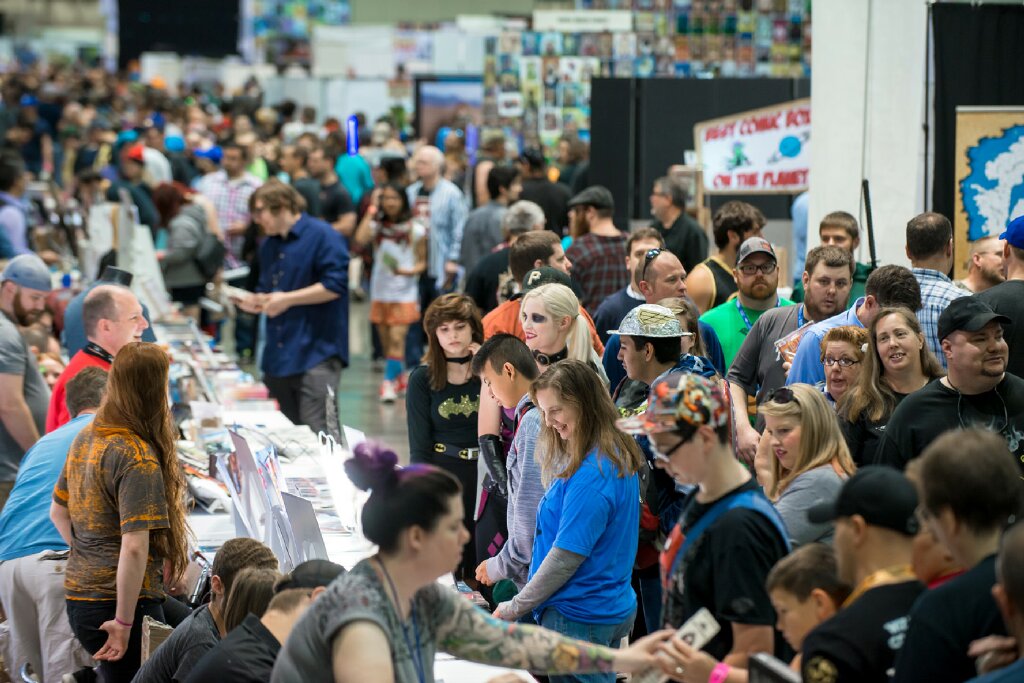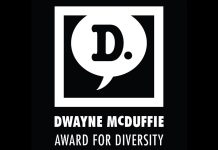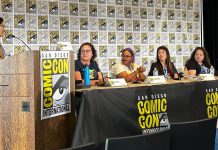By Amanda Steele
Big conventions like New York Comic Con offer such a wide range of activities and options that there is something for most fans to love. One big draw that seems to become more and more popular each year is Artist Alley. At a convention like NYCC, there are dozens of artists to choose from, including popular names in comics as well as relatively new fan artists who have a large following online. Judging by how crowded many of these booths are consistently, fans are excited to put their money towards art.
The artwork being sold at cons is a great way for fans to find merch of whatever they love, but it also says more than that. The art that is on display, and what is seen as acceptable to put up, says a lot about the state of nerd culture and pop culture in general.
There are a lot of conversations that have been had, are being had, and will continue to be had about diversity and representation in media. These conversations are literally held in panels at NYCC. These days, there are lots of panels discussing things such as LGBTQIA+ portrayals in media, Black Heroes Matter, and more.
While it used to be that a big convention like New York Comic Con might have seemed to appeal mostly to a more privileged cisgender, white, straight, male audience, thankfully, some things are changing. Of course, there is always more that can be done, and these conversations and talks about how to make nerd culture, cons, and pop culture overall more inclusive and accepting of many diverse identities will continue to be important.
One telling way to see what kind of fans and fandoms are seen as acceptable and what kind of people are most welcome in comics and pop culture is by looking at the art on display in Artist Alley.
At a big convention like this, many artists are aware that there is some potential for networking with large companies that could possibly lead to work in the future, so fan art works especially tend to be a bit more sanitized than at smaller cons. The work that tends to be the most on display is still more traditional. It’s works that are family friendly and that big companies — like Marvel or its parent company Disney — wouldn’t see as an issue. There has always been, and continues to be, a lot of art that shows heterosexual relationships, even if it’s fan art.
However, there has recently been a marked shift. Now, when walking through the booths in Artist Alley, you can find quite a few artists displaying LGBTQ art — including fan art — and some of it definitely caters to a more mature audience.
While queer-inclusive fan works are huge staple of fandom and have been since its inception with things such as Star Trek zines that were all about Kirk/Spock, these creations haven’t always been welcome in a huge fandom space. This difference is exciting to see, but it still reflects a problem: queer art, especially art that tends to cater more to a female or queer gaze, is still a bit taboo.
Of course, at a big con where kids do attend, works on display aren’t going to be explicit. But there is such a prevalence of artwork that shows women in scantily clad outfits that you’d barely even notice. This art is common, and no one really bats an eye at it or questions if it’s appropriate to display. In comics themselves, there is a lot of discourse about the many ways women are drawn and how they are often sexualized and shown in proportions that aren’t realistic. However, seeing a man like this is rarer. This is shifting now, but it doesn’t mean that everyone likes to see it or is willing to share a space that used to only cater to them.
https://twitter.com/pineapplebreads/status/1180124900335525888
One artist who was selling LGBTQ shipping art as well as artwork that showed popular Marvel heroes shirtless — like Iron Man and Captain America — noticed some pushback for the way their art catered to a queer and female gaze.
My Pride drawings and Tattoo series make a lot of dudebros passing by my table uncomfortable, but… I’m not sorry
— jay ✦⁺ (@pineapplebreads) October 4, 2019
One dudebro bought a tattoo Tony print to make his bro who lost a bet uncomfortable but he still paid me $15 to do it ✌️
— jay ✦⁺ (@pineapplebreads) October 4, 2019
Of course, not all art is going to be to everyone’s taste, and there isn’t anything inherently wrong with enjoying art that shows women in a sexy manner, but these opinions do speak to this undercurrent of certain kinds of art and fan art being less acceptable than others.
Thankfully, the shift to a more inclusive audience and having more creators feeling like they can show art that doesn’t cater to cishet white men is a positive one. With Eisner-winning artists like Jen Bartel having lead the way by being openly LGBTQ and successful in a comic art career, it’s apparent that other creators are taking notice.
This is a great thing to see. While there are some smaller cons around that are more centered on marginalized fans, especially ones like Flame Con in NYC, there being more space for queer and diverse fans of all kinds at large cons is important. These smaller cons are also essential, but seeing small steps be taken at big cons — mostly because fans and creators themselves are pushing the boundaries and standing up for their work, — makes a huge difference to the overall inclusivity of these spaces.
Many of these artists who sell to an audience that’s mostly people of marginalized genders and queer folks tend to do great at these cons. Their booths are often swarming with people, so it’s clear that these fans are willing to put their money where their mouth is. In fact, they are sometimes literally willing to pay hundreds of thousands of dollars collectively to be able to purchase the kinds of art they want to see. They want to be catered to a little, and it’s progress that they are able to find more than just crumbs these days.
✨Outer Senshi Princesses✨ NEW Print launching at NYCC this week! 💖 pic.twitter.com/kPDAKSYNuN
— Jen Bartel (@heyjenbartel) October 1, 2019
https://twitter.com/joviellety/status/1179832707058208768
After all, if art that shows women nearly half naked is ubiquitous, art that shows a few sexy male superheroes in a way women find appealing shouldn’t be a problem either. Shipping, queerness, and audiences who crave these themes aren’t going away, and their creative works don’t need to be hidden under tables anymore. Even for those who think that bottom line is the most important thing, it would be smart to harness the collective power of these communities. They are tired of being pushed to the margins of fandom, despite having built so much of it with their own hands.








